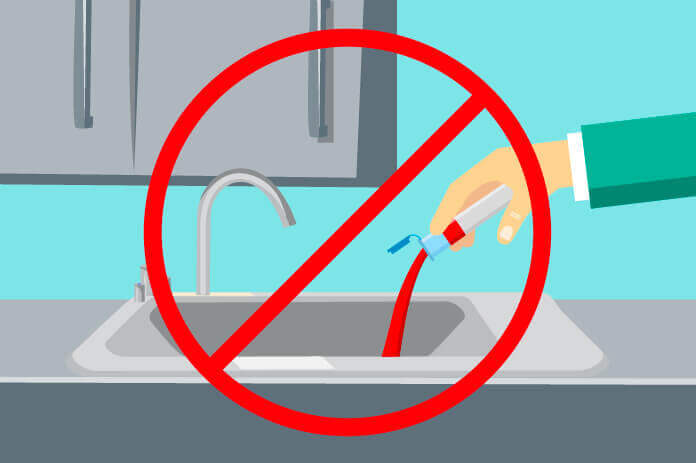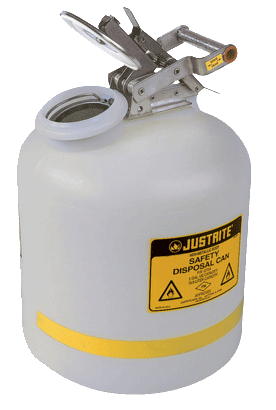Dependable Liquid Waste Disposal Melbourne: Safe and Reliable Services
Dependable Liquid Waste Disposal Melbourne: Safe and Reliable Services
Blog Article
Exactly How Liquid Waste Disposal Functions: An In-depth Review of Strategies and Technologies Utilized

Overview of Liquid Waste Kind
The complexity of liquid waste types requires a comprehensive understanding of their features and effects for disposal. Liquid waste can extensively be categorized into several kinds, consisting of industrial, municipal, agricultural, and unsafe waste. Each classification shows distinct buildings, requiring specific administration strategies to reduce ecological and health risks.
Industrial fluid waste originates from producing procedures and typically consists of a series of pollutants, such as heavy steels, solvents, and organic substances. Community fluid waste, mainly comprising wastewater from homes and business establishments, consists of organic matter, nutrients, and pathogens (industrial wastewater treatment). Agricultural liquid waste, consisting of runoff from farms, may consist of fertilizers, chemicals, and animal waste, posing threats to water high quality and environments
Harmful fluid waste is defined by its poisoning, reactivity, or prospective to cause damage. This group consists of materials like acids, bases, and certain chemicals that demand rigid handling and disposal methods. Recognizing these varied liquid waste kinds is critical for developing effective disposal approaches and making certain compliance with environmental guidelines. Proper classification and characterization are essential for carrying out proper treatment strategies and minimizing the negative impacts on public health and the setting.
Physical Therapy Methods

Screening is the initial action, where larger fragments and debris are gotten rid of from the fluid waste making use of screens or grates. This process secures downstream equipment from damages and guarantees smoother procedure. Complying with testing, sedimentation utilizes gravitational force to separate solids from liquids. In sedimentation storage tanks, larger particles settle near the bottom, creating a sludge layer, while the cleared up liquid can be further treated.
Purification is another necessary method that includes passing the fluid with porous products, such as sand or membranes, to capture smaller fragments. This action enhances the high quality of the liquid, making it suitable for succeeding treatment processes.

Chemical Therapy Methods
Chemical treatment methods are vital for properly taking care of fluid waste, specifically in resolving liquified and colloidal pollutants that physical approaches might not appropriately remove. These strategies make use of numerous chemical agents to counteract, precipitate, or transform hazardous compounds into much less harmful forms.
One common approach is coagulation and flocculation, where chemicals such as alum or ferric chloride are included to promote the aggregation of check my reference suspended bits. This process boosts sedimentation, enabling much easier elimination of the resulting sludge. Additionally, oxidation processes, utilizing representatives like chlorine or ozone, are used to break down complex natural substances and virus, making the waste safer for discharge or more therapy.
Neutralization is an additional critical technique, which changes the pH of acidic or alkaline waste streams to neutral degrees, stopping prospective injury to downstream systems and the setting. Furthermore, advanced oxidation processes (AOPs) utilize combinations of oxidants and ultraviolet light to break down relentless toxins, accomplishing a greater degree of therapy efficiency.
Organic Therapy Processes
Biological therapy procedures play a vital function in the monitoring of fluid waste by using microorganisms to decay raw material and reduce pollutant levels. These processes can be broadly classified right into anaerobic and cardio therapies, each utilizing details microbial communities to achieve reliable waste deterioration.
Cardiovascular therapy involves making use of oxygen to facilitate the breakdown of natural materials by germs. This procedure is generally executed in activated sludge systems, where oygenation storage tanks offer a conducive atmosphere for microbial development, bring about the oxidation of organic contaminants. The resultant biomass can be separated from treated effluent with sedimentation.
On the other hand, anaerobic therapy takes place in the absence of oxygen, relying upon different bacteria to break down raw material. This method is particularly helpful for high-strength waste, as it generates biogas, a renewable resource source, while decreasing sludge manufacturing. Technologies such as anaerobic digesters are often used in commercial and municipal applications.
Both anaerobic and aerobic organic treatments not just minimize the ecological influence of liquid waste yet likewise assist in source recuperation, making them essential elements of lasting waste administration methods. Their effectiveness, flexibility, and performance support their extensive execution across numerous fields.
Arising Technologies in Disposal
Cutting-edge methods to fluid garbage disposal are rapidly advancing, driven by advancements in innovation and a boosting emphasis on sustainability. Amongst these emerging technologies, membrane layer bioreactors (MBRs) have actually obtained traction for their capacity to combine organic treatment with membrane filtering, leading to top quality effluent that can be recycled in various applications. MBRs make it possible for go to these guys smaller sized impacts and a lot more reliable procedures compared to traditional systems.
One more promising development is using anaerobic digestion combined with nutrient recovery innovations, which not just deals with liquid waste yet likewise generates biogas and recoups important nutrients like nitrogen and phosphorus. This twin benefit enhances source efficiency and decreases ecological influence.
Additionally, progressed oxidation processes (AOPs) are being embraced for the destruction of complex natural contaminants. These methods utilize effective oxidants and catalysts to damage down contaminants at the molecular degree, supplying a very reliable option for tough waste streams.
Additionally, the assimilation of man-made knowledge and maker knowing in my blog waste monitoring systems is enhancing functional performance and predictive maintenance, resulting in reduced expenses and boosted ecological compliance. These innovations mirror a substantial change in the direction of even more lasting and effective liquid garbage disposal methods.
Final Thought
In conclusion, effective fluid waste disposal necessitates a comprehensive understanding of numerous methods and technologies. By constantly advancing these techniques, it ends up being possible to resolve the expanding challenges linked with liquid waste, eventually contributing to ecological security and resource healing.
Liquid waste disposal is a critical element of ecological administration, requiring a comprehensive understanding of numerous methods and modern technologies customized to various waste kinds. Fluid waste can generally be categorized into several types, consisting of commercial, community, farming, and harmful waste. Agricultural liquid waste, including overflow from ranches, might include plant foods, pesticides, and pet waste, positioning risks to water quality and communities.
Various physical treatment approaches play an essential duty in taking care of fluid waste efficiently - industrial wastewater treatment.In final thought, effective fluid waste disposal demands a detailed understanding of different methods and modern technologies
Report this page